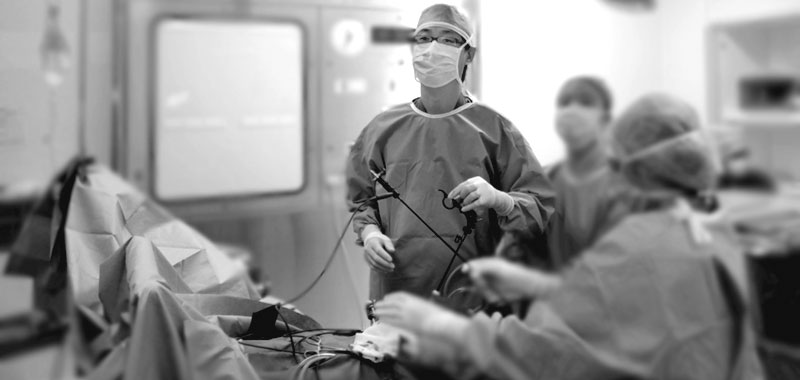What is the gallbladder?
The gallbladder is a small pear-shaped organ lying below the liver, on the right side of the abdomen, just below the ribcage. The function of the gallbladder is to collect and concentrate bile, which is a fluid produced by the liver that aids digestion. After a meal the gallbladder contracts and empties the stored bile into a system of tubes (bile ducts) which drain into the small intestine.
How do gallstones form?
There are two types of gallstones: pigment stones (made up of bilirubin) and cholesterol stones (made up of cholesterol). Most gallstones are cholesterol stones.
Cholesterol gallstones can form when there is too much cholesterol in the bile. Gallstones can also develop if the gallbladder does not completely empty itself of bile.
Pigment gallstones may form in people who have certain conditions, such as cirrhosis of the liver or blood disorders.
What are the symptoms of gallstones?
Many people with gallstones do not experience any symptoms. These gallstones are known as "silent stones."
Those patients who do have symptoms complain mainly of pain, which can last from several minutes to several hours. Pain may arise when gallstones move from the gallbladder into one of the bile ducts and hinder the flow of bile. Gallstones that migrate can cause conditions such as acute cholecystitis (inflammation of the gallbladder), cholangitis (infection and inflammation of the bile ducts), and pancreatitis (inflammation of the pancreas).
The pain may be located in the upper part of the abdomen, between the shoulder blades, or under the right shoulder.
Other symptoms of gallstones include:
- Sweating
- Vomiting
- Fever
- Yellowish tinge of the skin (jaundice)
How are these problems diagnosed and treated?
Ultrasound is most commonly used to find gallstones. In a few more complex cases, other X-ray tests may be used to evaluate gallbladder disease.
Gallstones do not go away on their own. Some can be temporarily managed with drugs or by making dietary adjustments, such as reducing fat intake. This treatment has a low & short-term success rate. Symptoms will eventually continue unless the gallbladder is removed.
Surgical removal of the gallbladder (cholecystectomy) is the time honored and safest treatment of gallbladder disease.
How is gallbladder removal (cholecystectomy) performed?
In most cases, gallbladder removal is performed using minimally invasive techniques (keyhole surgery).
The procedure is performed under general anaesthesia ie the patient is fully asleep during surgery. The surgeon starts by making a small incision near the belly-button/navel through which he places a narrow plastic tube called a ‘port’. A laparoscope (a tiny telescope) connected to a special camera is inserted through the port, giving the surgeon a magnified view of the patient's internal organs on a television screen. More ports (usually 3) are inserted in the upper abdomen which allow the surgeon to insert specially designed, long instruments and delicately separate the gallbladder from its attachments and then remove it through one of the incisions. After the surgeon removes the gallbladder, the small incisions are closed with a stitch or two or with surgical tape
What should I expect after gallbladder surgery?
A certain amount of postoperative pain is to be expected, although pain after laparoscopic surgery is much less than that experienced after traditional, open surgery. Some patients may experience nausea or vomiting soon after waking up from general anaesthesia.
Many patients however, are able to tolerate a liquid diet on the day of the surgery. Most patients will be able to leave the hospital the day after surgery. In some patients who are motivated and who have uncomplicated gallbladder disease, day surgery laparoscopic cholecystectomy is also possible.
Patients are encouraged to walk as soon as they feel up to it on the day of surgery. Patients will probably be able to return to normal activities within a week's time, including driving, walking up stairs, light lifting and working.
|







